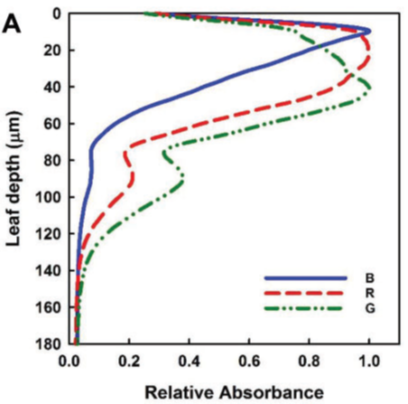
Review: Perspectives on improving light distribution and light use efficiency in crop canopies (Plant Physiol)
Plant Science Research WeeklyLight comes largely from above, and plants have evolved strategies to efficiently capture this light even when competing with other potentially shading plants. However, at a field-level, such competition may (and does) prevent plants from collectively maximizing light use efficiency, hence yield. In…
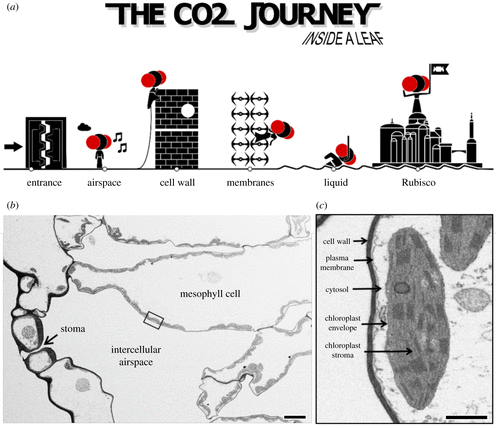
CO2 diffusion in tobacco: a link between mesophyll conductance and leaf anatomy (Interface Focus)
Plant Science Research WeeklyThree key factors affect a plant’s ability to fix carbon: enzymatic activity of Rubisco, stomatal conductance, and the journey from sub-stomatal cavity to Rubisco, also known as mesophyll conductance (gm). This latter is the focus of this new work by Clarke et al. They delightfully compare this journey…

Redox regulation of NADP-malate dehydrogenase is vital under fluctuating light environment (PNAS)
Plant Science Research WeeklyRedox switches regulate photosynthetic reactions and are mediated by conserved cysteine pairs, activated by reduction under light and deactivated by oxidation in the dark. Those reactions are mediated by thioredoxins (Trx). Usually, only plastidic and not cytosolic isozymes show these redox switches.…
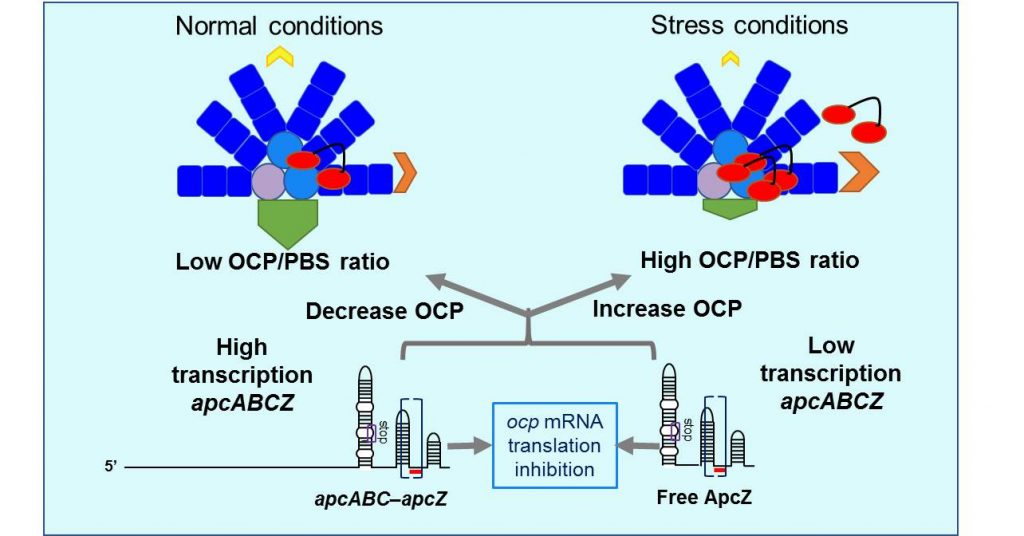
Crosstalk Between Light Harvesting and Photoprotection Is Mediated by a Regulatory sRNA
The Plant Cell: In a NutshellZhan and Steglich et al. investigate the small RNA-mediated regulation of the photoprotective Orange Carotenoid Protein in cyanobacteria. https://bit.ly/3d3AqY0
By Jiao Zhan1,2, Wolfgang Hess3 and Diana Kirilovsky1
1 Université Paris-Saclay, CEA, CNRS, Institute for Integrative Biology of the…
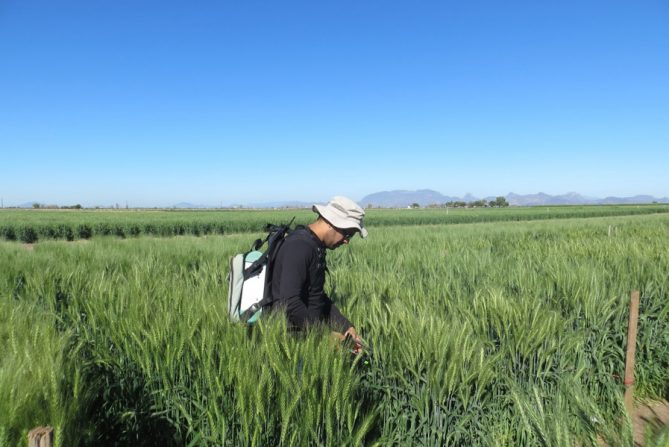
Effect of leaf temperature on the estimation of photosynthetic and other traits of wheat leaves from hyperspectral reflectance (J. Exp. Bot.)
Plant Science Research Weekly
Efficient phenotyping is important for plant breeding. For wheat, leaf reflectance spectra can be used to calculate leaf traits that impact crop yield, particularly constituent (leaf mass per area, nitrogen/chlorophyll content) and physiological (Rubisco carboxylation activity, electron transport…

A long shot: Photosynthesis-derived systemic signal controls lateral root emergence (Plant Physiol.)
Plant Science Research WeeklyPhotosynthesis, in addition to generating ‘food’ for plants, is also known to control root growth, although the mechanism has been unknown. Duan and co-workers identified CYCLOPHILIN38 (CYP38) as necessary for photosynthesis-mediated lateral root (LR) emergence. The chloroplast-localized CYP38 is…
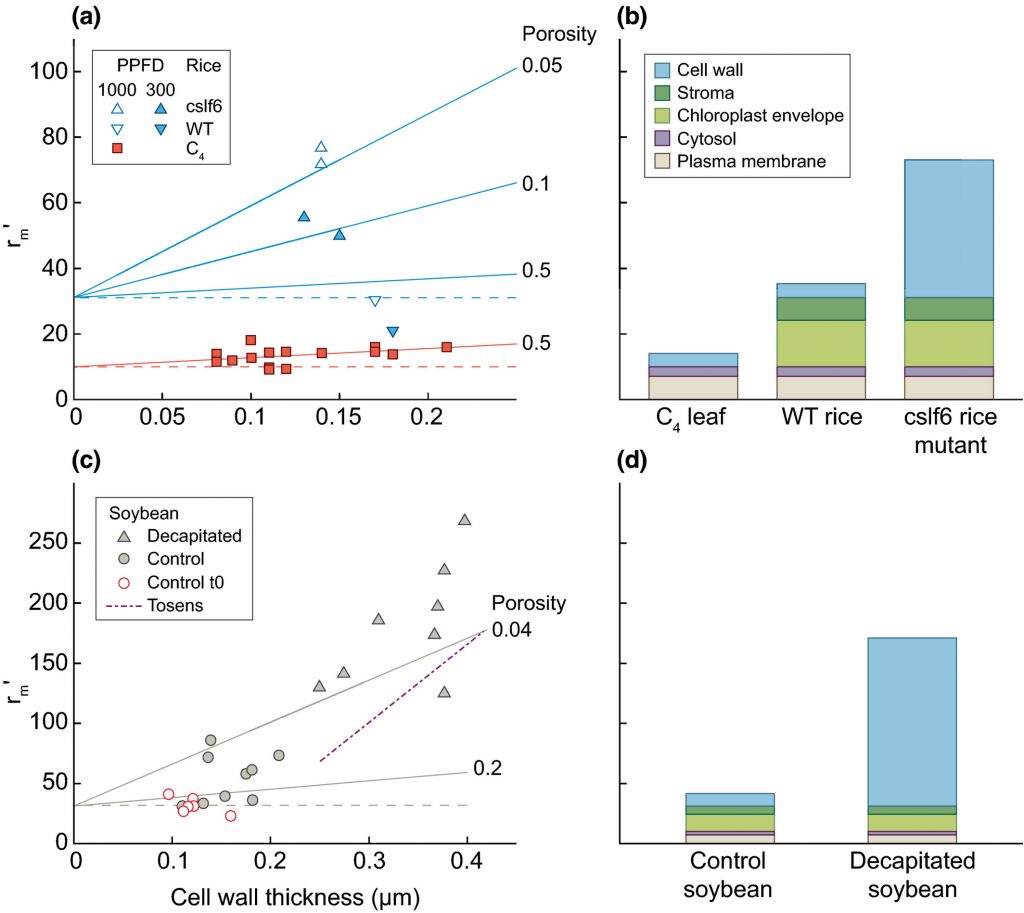
Review: Mesophyll conductance: walls, membranes and spatial complexity (New Phytol.)
Plant Science Research WeeklyThere’s been a lot of talk lately about how to improve the carboxylation efficiency of Rubisco, but of course this also depends on how much CO2 reaches the enzyme within the chloroplasts. To do so, it needs to pass through several distinct barriers: the boundary layer to reach the leaf surface, the…
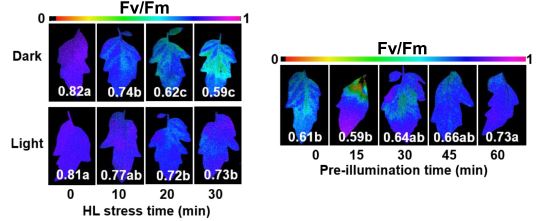
A high-five for high light protection
Blog, Plant Physiology, Plant Physiology: News and Views, ResearchKasper van Gelderen
Utrecht University
[email protected]
Plants cannot live without light, but they also cannot live with too much light. Beyond a certain threshold, a high light intensity will damage the photosynthetic apparatus directly. Furthermore, high light leads to the production of reactive…
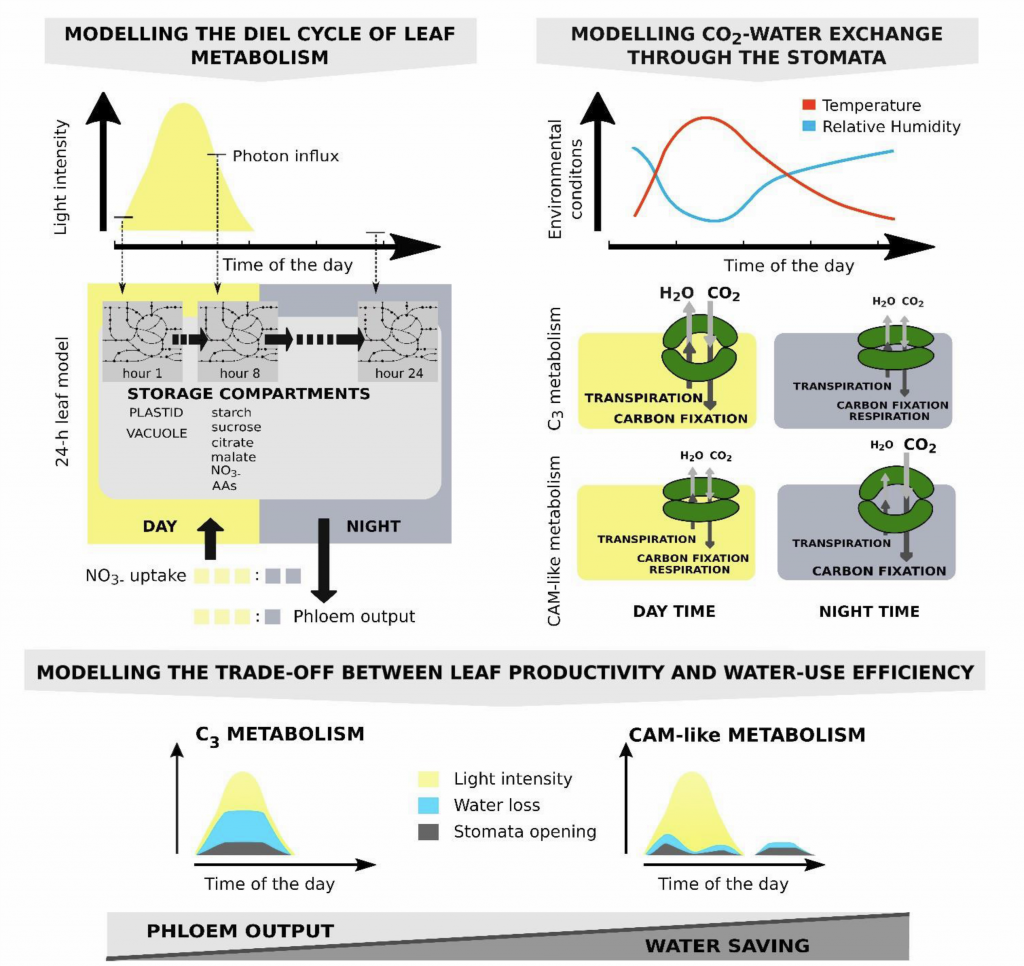
Alternative CAM and water-saving flux modes into C3 leaf metabolic model (Plant Cell)
Plant Science Research WeeklyCrassulacean acid metabolism (CAM) is a photosynthetic adaptation pathway in arid environments to minimize water loss by opening the stomata at night, when the temperature and therefore water loss due to transpiration is lower. Carbon dioxide is initially fixed at night and stored in the vacuole. Engineering…

